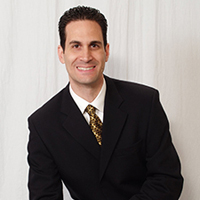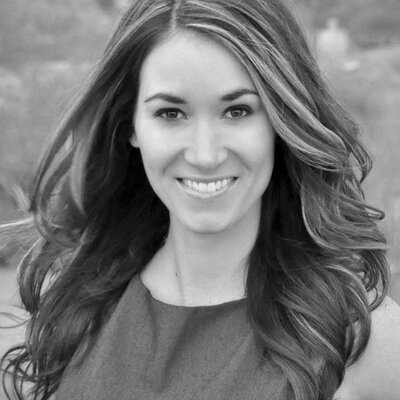How do successful real estate investors know which properties will deliver the greatest ROI?
Simple, they know what to look for.
Two weeks ago I asked 17 real estate investment experts a simple question:
Which 3 formulas/metrics do you look at first before deciding to invest in a piece of real estate, and why?
I wanted to know which numbers and formulas they used to consistently identify smart real estate investments that generate positive cash flow and a healthy ROI.
As a real estate investor myself, I have a list of metrics that I look at closely when deciding whether or not to invest in a piece of real estate. But, there’s always room to become a smarter investor and minimize risk.
I’m also a firm believer that in order to be successful you need to surround yourself with, and learn from other successful people. In this case, I wanted to go straight to the horses mouth and find out which formulas and metrics some of the most successful real estate investors used to consistently make smart profitable investments.
Do they know something I don’t know?
Of course 🙂
Read on to discover the formulas and metrics you should look at before pulling the trigger and investing in your next piece of real estate…
…as listed by 17 of the industry’s most successful investors.
You can either skip to your favorite expert using these quick links, or kick your feet up, grab a coffee and dive straight in 🙂
Seth Williams Brandon Turner Ali Boone Rich Danby Mat Piche Spencer Cullor Ilyce Glink Michael Blank Andrew Fortune Sharon Vornholt Mark Ferguson Ben Leybovich CJ Brasiel Tracy Fortune Jake Durtschi
 1. Marco Santarelli, Investor, Author, Founder of Norada Real Estate
1. Marco Santarelli, Investor, Author, Founder of Norada Real Estate
Here are the three metrics I consider first before I dig deeper into my due diligence on a specific property:
DealGrader Score – this is our proprietary grading algorithm that factors in many of the macro-economic factors (migration, job growth, unemployment appreciation potential). Investors need to start by looking at the market – a top-down approach as I mention in my 10 Rules for Successful Real Estate Investing.
Rent-to-Value Ratio – This will tell me fairly quickly if the property will cash-flow and how well. (But this is always secondary to the overall market conditions and neighborhood.)
Cash-on-Cash Return – this is a key financial metric that tells me the real rate of return on my investment.
To clarify:
The R/V ratio is the monthly rent divided by the purchase/acquisition costs. A value over 0.7 is acceptable but ideally you want a value of 1.0% or more.
The COC return is the net cash-flow divided into the total cash invested.
 2. Seth Williams, Founder of REtipster.com
2. Seth Williams, Founder of REtipster.com
First and foremost, I look at cash flow. My primary purpose for any long term investment is to create a new stream of income that puts money in my pocket after all of its expenses are paid. Strong, positive cash flow is an absolute MUST for any prospective property I purchase.
Second is my cash on cash return, which is an equally important measurement that goes hand-in-hand with a property’s cash flow. How expensive will it be for me to buy this new stream of income? Anybody can buy a new source of income (it’s not difficult), but it can be challenging to buy a source of income at the right price. Great deals only exists when the income can be acquired at a great price.
Third is the reliability of the income. What is the vacancy rate in this area? What kind of repairs and maintenance will be required over the long term? Can we get tenants who will pay their rent on time and keep the property in good condition? As with any investment opportunity, the devil is in the details – and a good rental property is more than just numbers on a page. I need to understand the good, bad and ugly of any property before I make an investment decision.
 3. Brandon Turner, Investor, VP Marketing at BiggerPockets
3. Brandon Turner, Investor, VP Marketing at BiggerPockets
Location is my first “filter,” as I don’t care how good a deal is: I won’t buy in a bad location.
Second, I want to make sure the house is “rentable” – meaning it’s something that I could rent out fairly easily (studio apartments in my area are tough, so I will avoid them.).
Finally, I look for major cash flow – meaning at least $100 per unit, per month.
 4. Michael Blank, Expert Apartment Building Investor
4. Michael Blank, Expert Apartment Building Investor
I’ll apply this question to apartment buildings, and I’ll assume I’m syndicating them, i.e. I have investors who provide the equity.The overarching metric I look for is the total return of the investment. The total return is the sum of cash flow distributions, loan amortization and profits from appreciation at resale and/or refinance divided by the equity that was invested divided by the number of years we held the investment:
Total return = (Cash Flow + Amortization + Appreciation) / Equity / # Years.
The total return I look for must be at least 15%. Let me say right now that that’s not easy to find these days!
You can use other metrics too, but they feed into the total return. For example, the cash on cash return gives you an indication how much cash flow an investment produces. The more, the “safer” and the easier it is to finance. For a stable property I look for a cash on cash return of at least 10%. If you’re re-positioning a property, the cash flow might be negligible or even negative. Stay away from these kinds of investments, at least in the beginning! As you get more advanced, you can price the lack of cash flow into the deal and get there as quickly as possible.
Then there’s the third metric, the capitalization rate. This is the Net Operating Income (NOI) divided by the price or value of the property. It can be used as an equalizer to quickly determine the fair market value of a property and to narrow down your search. But the cap rate is not the end-all be-all, either. Often the marketing packages advertise a 9-cap but upon closer inspection you discover the income is high and the expenses are low. So it’s not really a 9-cap but maybe more like a 7-cap.
While the cap rate is useful and the cash on cash return is important, the overarching metric I use is the total return.
 5. Jake Durtschi, Expert Property Manager and Real Estate Investor
5. Jake Durtschi, Expert Property Manager and Real Estate Investor
It’s important to remember that metrics are an attempt to predict performance. Ignoring other predictive factors such as property condition, market conditions, and screening is a mistake. It is important to understand strengths and weaknesses of each metric.
Capitalization Rate: The capitalization rate factors income, vacancy, and expenses. It does not factor in debt service. The formula is: Net Operating Income / Price = caprate
Strengths: The caprate factors income and expenses. The caprate gives you a ratio so you can compare other properties that have different income or different expenses.
Weaknesses: Capitalization rate can be artificially impacted by deferring maintenance or other expenses. As you reduce expenses the caprate increases (looks more desirable and demands a higher value). Other ways to artificially increase values for a short time include reducing qualification standards for tenants moving in and procrastinating evictions.
Delinquency: Figure out the delinquency ratio. This number will give information on management factors such as tenant screening, collection processes, and eviction processes. Typically properties that have extraordinarily high delinquency accounts have additional evictions and repairs needed at purchase.
Debt Coverage Ratio: The debt coverage ratio is figured by dividing the mortgage payment by the Net Operating Income. Most investors will have different comfort levels. Most investors insist on no less than 125% coverage. Others may insist on at least 150%. I recommend that older properties with more potential maintenance should have a little higher coverage. On the other hand, a lower debt coverage ratio with higher reserves may provide higher returns over a period of time.
I recommend these metrics be used thoughtfully, and not treated as black and white ingredients for success. I don’t believe there is any magic formula, but these metrics will give investors a place to start.
 6. Tracy Royce, Short Sale Realtor, Investor and Foreclosure Expert
6. Tracy Royce, Short Sale Realtor, Investor and Foreclosure Expert
There are a few “make it or break it” formulas I consider to see if there’s some juice in the deal.
One, I look at the retail prices, to make sure there is enough equity spread depending on if I’m keeping or flipping it. Thin margins are too chancy; it has to meet a minimum spread. With that, I want to see a healthy flow of activity, not be the only one selling or one of dozens available, so there has to be a good balance of comps.
Second, I want to know how long it’s going to take me to sell/rent, based on the same comps.
Lastly, the return on my money has to make sense. I want any capital invested back as soon as possible with the highest possible return. If all these formulas add up, I’m jumping in the car to go put my eyes on the deal and hopefully buy it.
 7. Andrew Fortune, Expert Realtor
7. Andrew Fortune, Expert Realtor
Thank you Jacob Grant Property Management for taking the time to put this article together. It’s a great question. Here’s my 2 cents:
Since I’m a “fix & flip” investor, I typically look at the Days on the Market as my #1 most important piece of data. This will help me to determine how long the property may be on the market once I list it for sale.
My success as a real estate investor is directly tied to the speed in which I can close on my investment property and move on to the next one. If I get stuck with a house that takes 3 months to sell, it has a large impact on my year. When I run my spreadsheets to narrow down all of the current available investment properties to purchase, I immediately look at the days on the market and sort them by this value.
The second, and equally important metric is the Price Per Square Foot (PPSF) for the neighborhood. I calculate the neighborhood PPSF for every property that I’m interested in. This data will reveal the estimated resale value of the real estate in question, and help me to determine the popularity of the neighborhood in comparison with other neighborhoods in the area. Being a Realtor in Colorado Springs helps me determine this value, as I gather all of my data directly from our local MLS. Being a Realtor and an RE Investor is a great combination!
The third metric that I use to analyze the potential in an investment property is to calculate the distance from where I live to the piece of real estate in question. I live in Monument, CO, which is part of Northern Colorado Springs. If I find a deal in Denver, CO (about an hour away) with an equity spread of $40,000 and then find a deal in Colorado Springs (20 minutes away) with and equity spread of $30,000, I’m going to be much more interested in the Colorado Springs deal, based on the proximity to my home. When I flip a property, I’m usually there every day working on it for 2 or 3 weeks straight. Then, once it’s on the market, I’m going there to show it and keep up properly staged. Owning real estate that is close to my residence makes my life easier, so I prioritize that as a main metric for measuring the value of an investment property for myself.
 8. Ali Boone, Investment Coach and Founder of Hipster Investments
8. Ali Boone, Investment Coach and Founder of Hipster Investments
Will it cash flow? If it won’t, I don’t buy it. A lot of people don’t know what constitutes positive cash flow, so that formula needs to be understood ahead of time (i.e. how to calculate cash flow). Once I run the numbers on a property, and if it suggests positive cash flow, I then look at –
Quality. The quality of the property especially (no one likes unexpected repair expenses), the quality of the specific location (is it a safe area, do people want to live there?), and then quality of the market (is it growing? Is there job creation and population increases?) Once I deem the quality to be sufficient, I look at –
Worth. Is it a good deal? Is the purchase price reasonable for what I’m getting? Is the overall investment seem strong?
 9. Mark Ferguson, Realtor, Investor and Author
9. Mark Ferguson, Realtor, Investor and Author
I look at price first. Our market has increased greatly. Any house I see under $150,000 I look at for a flip or rental.
Once I see what may be a rental property deal I look at the numbers more carefully. Why would potential rent be. What would the cash invested be. What would cash on cash return be and what is the monthly cash flow. My goals are 20% cash on cash and $500 a month cash flow.
When I see a fix and flip deal I look at the numbers differently. What are all my expenses, what will the house sell for, how much work is needed, what unknowns may come up and what will my profit be. I want to make at least $25,000 on flips I buy for under. $150,000.
 10. Sharon Vornholt, real estate expert
10. Sharon Vornholt, real estate expert
I take a number of things into consideration.
The first thing is the neighborhood. This is probably the biggest consideration of all. Is this a neighborhood that I would want to hold property in myself? I don’t like to buy property anywhere that I myself am not comfortable working in. It doesn’t have to be an area that I want to live in. However it does have to be an area investors want to buy property in to rehab and flip or a good area for rental property that a landlord would be interested in.
Then if I intend to wholesale the property I ask myself, “Is this an area where I am likely to find a buyer for the property easily”? I know where my cash buyers on my list like to buy so I am always looking for properties in these areas. But that doesn’t mean I won’t buy in another area. It just means I will have to actually market the property to find a buyer rather than just calling someone on my list.
If I can answer yes to the first two questions it becomes all about the numbers. I will look at the comps for the area. Then I will determine the extent of the repairs and upgrades needed. Once I have that number. I will use the ” 70%” formula as a starting point for determining the ARV (after repaired value). Now depending on the ARV of the house and the area, I may use a slightly higher or lower starting point to come up with my offer.
If the numbers work I will make an offer.
 11. Ben Leybovich, Real Estate Investor, Entrepreneur and Speaker
11. Ben Leybovich, Real Estate Investor, Entrepreneur and Speaker
Multifamily:
CAP Rate (Capitalization Rate) – CAP Rate is a metric of the marketplace more so than an individual opportunity. It answers the question – what rate of return are investors choosing to deploy capital at in a specific marketplace for a specific class and style of asset. The formula juxtaposes the NOI (net operating income) with Value. This formula can be used to either evaluate the marketplace by juxtaposing the sold comps with the NOI of those sold comps, or it can be inverted and used to arrive at a capitalized valuation of an asset by juxtaposing its’ NOI to the market CAP Rate. I do not underwrite to CAP Rate, but I study the marketplace and place the opportunity within the fabric of the marketplace via CAP Rate.
Value = NOI / CAP Rate
DSCR (Debt Service Coverage Ratrio) – DSCR compares the NOI to the Cost of Money (Mortgage; Debt service). The banks use DSCR to underwrite income-producing assets, and so should we. The minimu DSCR a bank would consider is not less than 1.2 – which mean that the NOI is 20% greater than the cost of money. The minimum that I would advise is 1.4
DSCR = NOI/Cost of Money
Cash Flow – this is the amount left in your pocket after all expenses are paid. This is why we buy income-producing property.
CF = Gross Income – Operating Costs – Cost of Money
Or,
CF = NOI -Cost of Money
If there is no financing (if you pay cash for the property), then the CF is equal to the NOI.
There are many other formulas we use, including the IRR, but if you cross your t’s and dot your i’s with these 3, you should be able to stay out of big trouble.
 12. CJ Brasiel, Expert Realtor
12. CJ Brasiel, Expert Realtor
3 Most Used Metrics for the Real Estate Investor
As a real estate investor, it is important to create business goal for each real estate investment as well the entire real estate portfolio. To be successful, the 3 most common used metrics when deciding to invest could be summarized as:
1.) Determine your investment goals.
Start with the WHY. Why do you want to be a real estate investor? Scrutinize your knowledge and become more educated. Know the money you have to invest, the percent you want for return and what options you have for achieving these goals. Evaluate potential on leveraged money and CASH. Understand conventional lending and hard money lending. Decide milestones for your adventure and create a plan.
2.) Evaluate the market
The three most common tools include ROI (return on investment) and Cap Rate (Capitalization Rate) for big picture valuations. If the property is a FLIP, then understand the market dynamics, the cost to hold, re-hab, remodel, and sales costs. If the property is a BUY and HOLD, the third metric, NOI (Net Operating Income) is key and it will be instrumental in setting realistic expectations for any rental. For any market, know the demographic inflow and outflow as well the employment projections to help determine if this is the right area to invest in.
3.) Plan an Exit Strategy
Managing any investment is understanding the tax consequences and all options for continuing profit and portfolio building through tools like the 1031 exchange. Understanding legacy decision and how any real estate may be transferred to heirs is a key decision point for any investor. Divid the portfolio into risk/return buckets, and know which will be used for cash flow, and which will be used for long term capital gains.
Unlike a “home”, a real estate investment is an investment that requires even more evaluation, planning, and strategy to tilt the balance to success. The reality, not all investments pay off. Make sure your plan has clear goals, strong evaluation tools, and a definitive plan to insure your success.
 13. Ilyce Glink, Award-Winning Real Estate Expert & Personal Finance Expert
13. Ilyce Glink, Award-Winning Real Estate Expert & Personal Finance Expert
I only look at one thing and that’s free cash flow.
 14. Debbie Drummond, Expert Realtor
14. Debbie Drummond, Expert Realtor
When looking for investment properties, we try to keep it simple. First things we look at are:
Demand. Is it an area where homes are selling quick? If no one is buying or renting in this area, you’re wasting your time. You’ll have trouble finding and keeping tenants and the appreciation won’t be there.
Cash flow.
We’ve been lucky the past few years. Low interest rates and home values meant positive cash flow. That will be more challenging as prices and interest rates rise. Having a negative cash flow doesn’t rule out investing. The investor needs an accurate number for the negative cash flow and they need to be prepared for it.
Repairs & Rehab.
Take a good look at what will need to be done before you buy. Don’t get stuck with a money pit. If you do, you can kiss cash flow and ROI good bye.
 15. Mat Piche, Expert Realtor and Investor
15. Mat Piche, Expert Realtor and Investor
The first three things I look at before buying a property are:
Is the city growing and does it have a future? (i.e. job creation, is it a “one hit wonder town” or does it have many industries like technology, insurance, manufacturing going for it, etc)
Is it in a quiet and safe neighborhood close to amenities, highway access and schools?
Does the property need structural work or purely cosmetics? (I only like the ugly and outdated homes that I can buy cheap and re-paint, install some new floors and countertops etc, and stick it on the rental market to attract quality tenants!)
Personally, I don’t really think or care about hard formulas/metrics.
What I look at, is:
Will the property cash flow today?
Will it cash flow five years from now?
Will it attract the tenant profile that I want (my ideal customer).
If those are answered all with yes, than I’m happy! I’m in this for the LONG haul. My properties will completely fund my lifestyle until I die, so I don’t really plan on selling any of them, unless they’re just not performing well for whatever reason.
Logic tells me that if I put 20% down, the property appreciates 3% per year and the mortgage is always getting paid down every month, that’s a 15% return on my money every year. NOT including cash flow.
If that’s my ‘worst case scenario’ (which it never is), I can live with that return 🙂
 16. Rich Danby, Real Estate Coach and Investment Expert
16. Rich Danby, Real Estate Coach and Investment Expert
My key points of interest when looking at investment real estate.
Population Growth
Is the surrounding area growing? Is the population growth meeting or exceeding the national average? This is an important window into the near future, and the potential value of the investment.
This goes hand in hand with population growth. It’s important that there are immediate plans for the area’s future. Renting property in a stagnant area could prove to be difficult.
Jobs
Are there many jobs in the area or new jobs coming? People tend to populate areas close to work.
Is there more than one type of employment indusrty? If the only employer in town closes, many people will relocate. Be sure there is diversified employers in the area.
Proximity to Amenities
An area walking distance to shops and amenities is most desirable to tenants. Most people will choose to live closer to the grocery store than travel a far distance to run their errands. Almost everyone loves convenience. Checking the Walkscore of a property is a valuable tool.
Transit
Being close to transit is very desirable. Easy access to city transit is high on the list for most tenants, even if they own a vehicle. A potential tenant will more often than not choose a location with immediate access to transit.
 17. Spencer Cullor, Successful Investor and Entrepreneur
17. Spencer Cullor, Successful Investor and Entrepreneur
Cost Per Unit
When we compare multifamily properties for purchase we like to look at the cost per unit and compare it to other similar age and class of apartments which have been sold recently. We feel this gives us a much better picture of the market value than capitalization rates or other measures that can be easily manipulated by a sophisticated broker or seller.
Expenses Per Unit
We really like to break down the expenses of a property by the number of apartment units. By breaking down expenses by the unit you can get a really good gauge of how the property is performing versus other properties in the area. It also cannot be manipulated as easily as other measures such as using percentages. Breaking expenses down this way allows you to quickly identify problem areas or opportunities to increase the value of the property by correcting inefficiencies.
Cash on Cash Return
We always measure the return on our investment on an annual cash-on-cash basis. We feel this gives us a very good measure of how our investment dollars are performing without over-complicating things.
HUGE thanks to everyone who participated in the roundup.
What Next?
If you enjoyed the post please share on social media using the share buttons below.
Leave a comment below and let us know which formulas/ metrics you look at before investing in real estate?
Join our monthly email newsletter and receive more tips from the experts.
